Annual Report on the Operation of the Canadian Multiculturalism Act 2019-20
Building a Better Canada Through Diversity
This publication is available upon request in alternative formats.
On this page
- List of figures
- List of tables
- List of participating federal institutions
- List of acronyms and abbreviations
- Foreword from the Minister of Diversity and Inclusion and Youth
- Introduction
- Part 1: Canadian Heritage
- Part 2: Implementation of the Canadian Multiculturalism Act across Federal Institutions
- Conclusion
List of figures
- Figure 1 Pillars of Canada's Anti-Racism Strategy 2019-2022
- Figure 2 Response Rate of Federal Institutions to Questionnaire
- Figure 3 Number of Employees Represented in Responses (Including Members of the Canadian Armed Forces)
- Figure 4 Percentage of Institutions that Collect Racial, Ethnic, or Religious Diversity Data to Develop or Improve Policies, Programs, Practices or Services
- Figure 5 Percentage of Institutions with Events that Educate Employees on Diversity in the Workplace
- Figure 6 Average Percentage of Operational, Management, and Executive Visible Minorities, Overall Average
- Figure 7 Total Number of Visible Minority Hires, Total Number of Visible Minority Promotions
- Figure 8 Percentage of Institutions that Work Proactively with Post-Secondary Institutions, Developed Hiring Programs for Visible Minorities, Developed Mentorship Programs
- Figure 9 Percentage of Institutions that Allow for Bilingual Non-Imperative Staffing of Visible Minorities, Have In-House Language Training for All Staff
- Figure 10 Percentage of Institutions whose Employees Participated in Anti-Racism/Anti-Racial Discrimination Training
- Figure 11 Percentage of Institutions that Have a Mechanism to Disclose Issues of Racism/Racial Discrimination
- Figure 12 Percentage of Institutions that Translated Policies, Practices, or Services into Languages Other than English or French
- Figure 13 Percentage of Institutions that Provide the Public Access to Translators
- Figure 14 Percentage of Institutions that Leverage the Multilingual Capacity, Cultural Competency, or Cultural Expertise of Employees
- Figure 15 Percentage of Institutions that Developed Partnerships with Stakeholders to Promote Multiculturalism
List of tables
- Table 1 Community Support, Multiculturalism and Anti-Racism Initiative Funding Comparison, 2018-19 to 2019-20
- Table 2 Promising Practices – Collection of Data
- Table 3 Promising Practices – Education and Awareness
- Table 4 Promising Practices – Prevention and Solutions
- Table 5 Promising Practices – Promotion and Celebration
List of participating federal institutions
- Administrative Tribunals Support Service of Canada
- Agriculture and Agri-Food Canada
- Atlantic Canada Opportunities Agency
- Atlantic Pilotage Authority
- Atomic Energy of Canada Limited
- Bank of Canada
- Business Development Bank of Canada
- Canada Border Services Agency
- Canada Council for the Arts
- Canada Development Investment Corporation
- Canada Economic Development for Quebec Regions
- Canada Energy Regulator
- Canada Lands Company
- Canada Mortgage and Housing Corporation
- Canada Newfoundland & Labrador Offshore Petroleum Board
- Canada Post
- Canada Revenue Agency
- Canadian Air Transport Security Authority
- Canadian Dairy Commission
- Canadian Food Inspection Agency
- Canadian Grain Commission
- Canadian Heritage
- Canadian Human Rights Commission
- Canadian Intergovernmental Conference Secretariat
- Canadian Museum for Human Rights
- Canadian Museum of History
- Canadian Museum of Immigration at Pier 21
- Canadian Northern Economic Development Agency
- Canadian Nuclear Safety Commission
- Canadian Race Relations Foundation
- Canadian Radio-Television and Telecommunications Commission
- Canadian Securities Transition Office
- Canadian Security Intelligence Service
- Canadian Space Agency
- Canadian Tourism Commission
- Canadian Transportation Agency
- CBC-Radio Canada
- Civilian Review and Complaints Commission for the RCMP
- Correctional Service Canada
- Defence Construction Canada
- Department for Women and Gender Equality
- Department of Finance Canada
- Department of Justice Canada
- Department of National Defence and the Canadian Armed Forces
- Elections Canada
- Environment and Climate Change Canada
- Export Development Canada
- Farm Credit Canada
- Federal Economic Development Agency for Southern Ontario
- Financial Consumer Agency of Canada
- Financial Transactions and Reports Analysis Centre of Canada
- First Nations Tax Commission
- Fisheries and Oceans Canada
- Global Affairs Canada
- Great Lakes Pilotage Authority
- Health Canada
- Immigration and Refugee Board of Canada
- Impact Assessment Agency of Canada
- Infrastructure Canada
- Ingenium - Canada's Museums of Science and Innovation
- Innovation, Science and Economic Development Canada
- International Development Research Centre
- Jacques Cartier and Champlain Bridges Incorporated
- Library and Archives Canada
- Marine Atlantic Canada
- Military Police Complaints Commission
- National Arts Centre
- National Battlefields Commission
- National Film Board of Canada
- National Gallery of Canada
- National Research Council Canada
- Natural Resources Canada
- Natural Sciences and Engineering Research Council of Canada
- Office of the Auditor General of Canada
- Office of the Commissioner for Judicial Affairs Canada
- Office of the Intelligence Commissioner
- Office of the Privacy Commissioner of Canada
- Office of the Public Sector Integrity Commissioner of Canada
- Office of the Superintendent of Financial Institutions Canada
- Pacific Pilotage Authority Canada
- Parks Canada
- Parole Board of Canada
- Patented Medicine Prices Review Board
- Privy Council Office
- Public Health Agency Canada
- Public Prosecution Service Canada
- Public Safety Canada
- Public Sector Pension Investment Board (PSP Investments)
- Public Service Commission of Canada
- Public Services and Procurement Canada
- Royal Canadian Mint
- Royal Canadian Mounted Police
- Security Intelligence Review Committee
- Shared Services Canada
- Social Sciences and Humanities Research Council of Canada
- Standards Council of Canada
- Statistics Canada
- Telefilm Canada
- The Federal Bridge Corporation
- Transport Canada
- Transportation Safety Board of Canada
- Treasury Board of Canada Secretariat
- Veterans Review and Appeal Board
- Via Rail Canada
- Western Economic Diversification Canada
List of acronyms and abbreviations
- AAFC
- Agriculture and Agri-Food Canada
- ARAP
- Anti-Racism Action Program
- CanNor
- Canadian Northern Economic Development Agency
- CCSF
- Canada Cultural Spaces Fund
- CLB
- Canadian Language Benchmark
- CMF
- Canada Media Fund
- CMHC
- Canada Mortgage and Housing Corporation
- CPF
- Canada Periodical Fund
- CSBCY
- Community Support for Black Canadian Youth Initiative
- CSMARI
- Community Support, Multiculturalism and Anti-Racism Initiatives Program
- DCCP
- Digital Citizen Contribution Program
- DICE
- Diversity, Inclusion and Competency, Excellence
- ELL
- English language learners
- ESL
- English as a Second Language
- FedDev
- Federal Economic Development Agency
- GBA+
- Gender-based analysis plus
- GEM
- Global Entrepreneurship Monitor
- IDRC
- International Development Research Centre
- IHRA
- International Holocaust Remembrance Alliance
- ISRI
- Indigenous Student Recruitment Initiative
- LGBTQ2
- Lesbian, Gay, Bisexual, Transgender, Queer, Two-Spirit
- MAP
- Museums Assistance Program
- MCF
- Mission Cultural Fund
- NABREAC
- National Anti-Black Education and Awareness Campaign
- NFB
- National Film Board of Canada
- NRO
- Nunavut Regional Office
- NSERC
- Natural Sciences and Engineering Research Council of Canada
- PEI
- Prince Edward Island
- PPSC
- Public Prosecution Service of Canada
- RCMP
- Royal Canadian Mounted Police
- SSHRC
- Social Sciences and Humanities Research Council
- STEM
- Science, technology, engineering, and mathematics
Alternate format

Annual Report on the Operation of the Canadian Multiculturalism Act 2019-20 [PDF version - 13.4 MB]
Foreword from the Minister of Diversity and Inclusion and Youth

In Canada, diversity is one of our greatest strengths, yet we know that a truly multicultural society—one that is truly open and inclusive—is always a work in progress. In 2019, I was named Canada’s first Minister of Diversity and Inclusion and Youth. The creation of this ministry is a strong signal of our government’s commitment to having diversity and inclusion at the centre of our decision making. As Prime Minister Justin Trudeau has said, Canada is stronger, not in spite of our differences, but because of them. Canada’s diversity is our strength.
In June 2019, our government launched the anti-racism strategy entitled Building a Foundation for Change: Canada’s Anti-Racism Strategy 2019-2022. This strategy, created for Canadians, by Canadians, was informed by lived experiences through 22 in-person consultations with 600 individuals from 443 organizations, in addition to more than 800 online submissions.
Canada’s Anti-Racism Strategy is an evergreen document that has laid the groundwork for long-term action by supporting three guiding principles: demonstrating federal leadership, empowering communities, and building awareness and changing attitudes. This Strategy addresses racism and discrimination in all of its forms, with a strong focus on community-based projects. It also complements existing government efforts aimed at eliminating inequities and inequalities that exist in Canada.
The Anti-Racism Secretariat coordinates federal action, including engaging with provinces, territories, and civil society to address all forms of racism, including anti-Black racism, anti-Indigenous racism, anti-Asian racism, antisemitism, and Islamophobia. The Secretariat also leads efforts to identify systemic barriers and gaps to develop further areas for action.
The COVID-19 pandemic has affected all Canadians and disproportionately certain segments of the population, including racialized communities, religious minorities, and Indigenous Peoples. The Anti-Racism Secretariat and Women and Gender Equality Canada set up the Equity-Seeking Communities and COVID-19 Taskforce to ensure that the federal response to COVID-19 is adapted to the needs of equity-seeking communities by engaging other federal departments, as well as communities, on disaggregated data, newcomer populations, and anti-Indigenous, anti-Black, and anti-Asian racism.
A truly multicultural society demands our effort, our attention, and our care. The many protests and calls to action that have taken place in Canada and around the world have further amplified the systemic racism, discrimination, and the many injustices that exist in society. They remind us that as we build back even better and consciously more inclusive, each of us must continue to step up and be allies as we combat racism and discrimination in all of its forms.
I invite you to read the 2019-2020 Annual Report on the Operation of the Canadian Multiculturalism Act for further details.

The Honourable Bardish Chagger
Minister of Diversity and Inclusion and Youth
Introduction
History of Canadian Multiculturalism
Canada was the first country to adopt a multiculturalism policy. On October 8, 1971, Prime Minister Pierre Trudeau announced multiculturalism as an official government policy, intended to preserve the cultural freedom of all individuals and provide recognition of the cultural contributions of diverse ethnic groups to Canadian society.
The multiculturalism policy was introduced in Canada based on the recommendations of the Royal Commission on Bilingualism and Biculturalism. While the commission, appointed in 1963, primarily examined means to develop an equal partnership between the English and French elements in Canada, it also considered the cultural contributions of other ethnic groups.
The policy was eventually enshrined into law in 1988 with the adoption of the Canadian Multiculturalism Act. The Act enabled the Minister responsible for the mandate to develop and deliver programs and practices to support its implementation. Previously, in 1982, the Canadian Charter of Rights and Freedoms had already recognized the multicultural heritage of Canada.
The principal objectives of the Policy focused on integration through:
- Retaining and fostering of identity: Integration, not assimilation, was favoured as the best approach to encouraging participation. Assistance, whether in terms of funding for food and folklore events, heritage languages for newcomer children, or parliamentary recognition through messages or events (e.g. Black History Month and Asian Heritage Month), were some of the means used to recognize their contributions.
- Overcoming barriers to participation: For integration to be meaningful, barriers (economic, social, cultural, and political) need to be reduced, if not eventually eliminated, to ensure meaningful equality of opportunity. Ideally, outcomes for all groups would be closely comparable in a variety of domains (e.g. employment and income, education, representation in government/private institutions, etc.).
- Promoting exchanges: Exchanges and sharing between individuals and communities was to be encouraged as part of recognizing identities and encouraging participation.
- Language acquisition: Minority groups were encouraged to learn at least one official language.
Evolution of Multiculturalism Policies in Canada
The Canadian Multiculturalism Act acknowledges multiculturalism as a fundamental characteristic of Canadian society with an integral role in the decision-making process of the federal government.
Following the adoption of the Act, the Department of Multiculturalism and Citizenship was created in 1991; however, it was integrated into the larger Department of Canadian Heritage in 1993. Since then, the Multiculturalism Program has been one major lever by which the Canadian government implements the Canadian Multiculturalism Act, and drives government priorities. Between 2008 and 2015, the Program was delivered by Citizenship and Immigration Canada/Immigration, Refugees and Citizenship Canada. In November 2015, the Program was transferred to the Department of Canadian Heritage.
The Multiculturalism Program delivers on its mandate via four key activities: grants and contributions; public outreach and promotion; support to federal and public institutions; and international engagement.
While some of the current priorities of the Multiculturalism Program are predicated on anti-racism initiatives (especially anti-Black racism) and support for equity-seeking communities, this focus is not new. Beginning in 1995, for example, employment equity legislation required that information be gathered on persons in designated groups, especially Canada’s visible minorities.
Since 1996, the census has collected information about racialized communities in Canada, and multiculturalism oriented itself towards the goals of eliminating racism and discrimination, and assisting institutions in becoming more responsive to Canada’s diversity.
The current policies within the Department of Canadian Heritage are a continuation of these perspectives, sharpened by the urgency of current events and increasing social awareness of the pervasive inequities and deep-seated biases that hinder the progress and success of certain groups, in particular Black, Indigenous, and People of Colour.
Part 1: Canadian Heritage
Multiculturalism Program Overview
Today, the objectives of the Multiculturalism Program are to:
- Support communities in confronting racism and discrimination, promoting intercultural and interfaith understanding and fostering equitable opportunities to participate fully in Canadian society;
- Reinforce cooperation among federal institutions to identity and address systemic barriers that result from racism and religious discrimination;
- Promote and engage in discussions on multiculturalism, diversity, racism and religious discrimination at the domestic and international levels, and;
- Strengthen research and evidence to build understanding of the disparities and challenges faced by racialized and religious minority communities.
In support of its four objectives, the Multiculturalism Program undertakes five key areas of activity:
- Community Investments – the Community Support, Multiculturalism, and Anti-Racism Initiatives (CSMARI) Program delivers grants and contributions funding under three components: projects, events and community capacity building. An additional component called Community Support for Black Canadian Youth Initiative (CSBCY) provides funding for projects that address the unique challenges faced by Black Canadian youth.
- Multiculturalism Policy – provides evidence-based policy advice on the overall legislative, policy and regulatory framework for the operation of the Canadian Multiculturalism Act. The Multiculturalism Policy Directorate also conducts monitoring, research and analysis of the needs and interests of diverse groups and of emerging trends and issues in the areas of multiculturalism, diversity and inclusion.
- Public Outreach and Promotion – conducts outreach and educates the public about multiculturalism initiatives such as Asian Heritage Month, Black History Month and Canadian Multiculturalism Day to increase awareness, understanding and public dialogue about multiculturalism in Canada.
- Support to Federal and Public Institutions – supports federal institutions in meeting their obligations under the Canadian Multiculturalism Act, and shares challenges, best practices, and resources to improve implementation of the Act.
- International Engagement – supports Canada’s participation in international agreements and bodies, such as the International Convention on the Elimination of Racial Discrimination and the International Holocaust Remembrance Alliance.
Key Federal Commitments
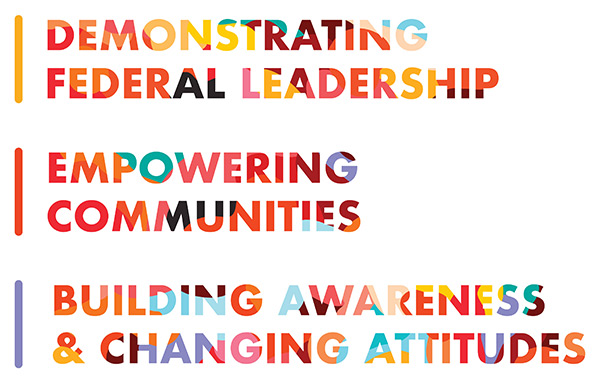
Figure 1 Pillars of Canada's Anti-Racism Strategy 2019-2022 – text version
- Demonstrating federal leadership
- Empowering communities
- Building awareness and changing attitudes
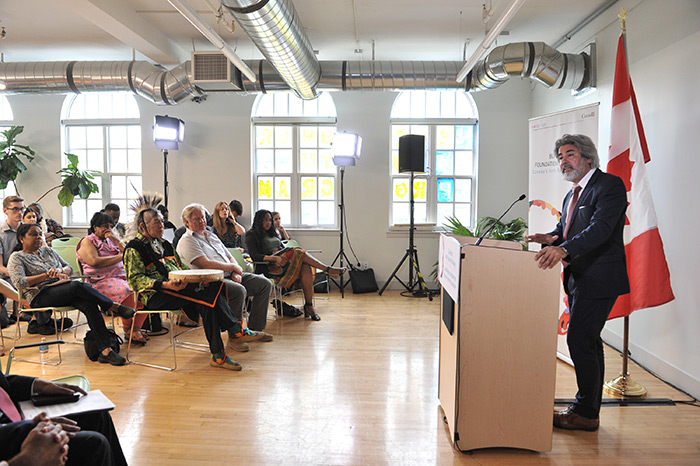
Budget 2018 provided $2 million for cross-country consultations on the development of new national anti-racism and anti-discrimination approaches. This engagement saw 22 in-person forums that welcomed 600 people and 443 organizations, as well as over 800 online submissions. Budget 2019 announced $45 million for Building A Foundation of Change: Canada’s Anti-Racism Strategy 2019-2022, which aims to counter racism in its various forms, with a strong focus on community-based investments. This new component of the Multiculturalism Program recognizes that the Government of Canada must take a leading role in addressing systemic racism and discrimination, and the Government of Canada delivered on its commitment to establish a new Anti-Racism Secretariat in October 2019. The Secretariat leads a whole-of-government approach to working with federal organizations to identify systemic barriers and gaps, develop new initiatives, and consider the impacts of new and existing policies, services and programs on racialized, Indigenous and religious minority communities. This work is designed as a first step for longer-term federal action against racism and discrimination in Canada.
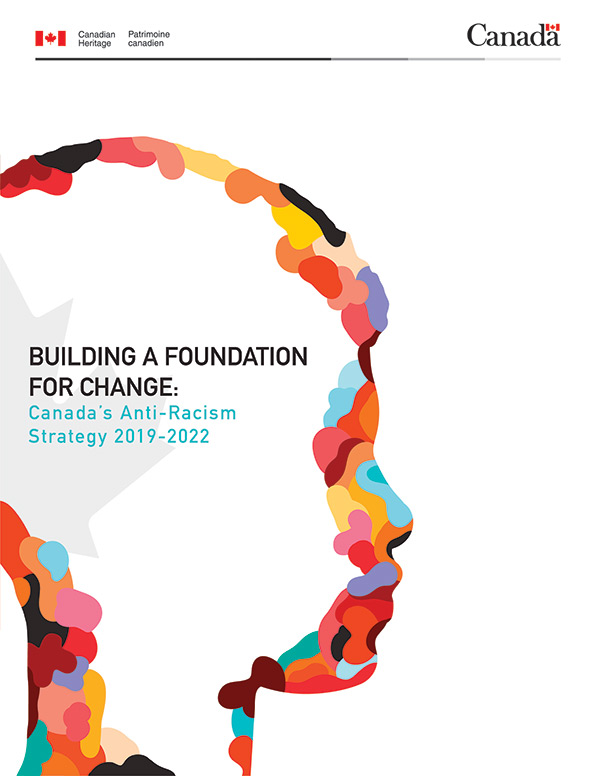
A key component of the Anti-Racism Strategy is the effort to address gaps in data and evidence. The lack of detailed, disaggregated data as well as shortcomings in the consistent collection, measurement, reporting and analysis of data have been cited as underlying factors contributing to racism. As part of the effort to improve data collection and analysis, funding was allocated through the Strategy to Statistics Canada ($4.25 million) and the Department of Justice ($660,000). Funding was also provided to Public Safety Canada ($900,000) to support it in developing a national framework and evidence-based guidelines to better respond to hate crimes, hate incidents and hate speech. These projects will result in new, publicly available research to address systemic barriers in Canadian society.
Multiculturalism Program Highlights
Empowering Communities – Multiculturalism Program: Grants and Contributions Funding
The Anti-Racism Action Program (ARAP)
Canada’s Anti-Racism Strategy allocated approximately $15 million to create the new Anti-Racism Action Program (ARAP), which will deliver community funding to address barriers to employment, justice and social participation among Indigenous Peoples, racialized communities, and religious minorities. ARAP will also prioritize projects that target online hate and promote digital literacy. A call for proposals for ARAP was launched in September 2019.
The Community Support, Multiculturalism and Anti-Racism Initiative
The core multiculturalism funding program, the Community Support, Multiculturalism and Anti-Racism Initiatives Program, continues to be a key funding program that supports Events, Projects and Community Capacity Building efforts. CSMARI received a top-up of $21 million on its funding through Budget 2018 that continues to be distributed to communities throughout the year.
In September 2018, a call for proposals was launched for CSMARI Projects and Community Capacity Building, and CSBCY. This intake closed on May 31, 2019 and resulted in $9.3M in funding for 96 projects over two or more fiscal years. This intake also resulted in $4.7M in funding for 77 single-year Community Capacity Building projects.
Spotlight: A CSMARI Funded Project
Project: Linking Together 2.0: Capacity Building for Sexuality and Gender Diverse Communities in PEI
Funding received: $17,000
Peers Alliance is a centre for sexual health wellbeing and drug use harm reduction. The funding was used to support 2SLGBTQ+ communities across Prince Edward Island by creating a virtual community centre which will help increase understanding of and comfort with 2SLGBTQ+ people on PEI. As part of the project, Peers Alliance worked with the PEI Association for Newcomers to Canada, the Mi’kmaq Confederacy of PEI an, the Black Cultural Society of PEI and La Fédération culturelle de l’Ile-du-Prince-Édouard.
Spotlight: A CSMARI Funded Project
Project: Expanding Community Support for Immigrants and Refugees
Funding received: $62,550
The Inter-Cultural Association of Greater Victoria helps individuals and organizations connect across cultures by engaging people through networks, education, and arts programming. It provides high-quality frontline services to immigrants settling in the Greater Victoria area through information, support, and tools to help them reach their goals. The funding was used to redesign the organization’s communication strategy to enhance its ability to reach and engage with newly arrived immigrants, refugees, and the broader Victoria community.
Support to Black Canadian Youth
Budget 2018 also provided $9 million over three years to Canadian Heritage to address issues related to Black Canadian youth. Almost $8 million of this funding was distributed through the Community Support for Black Canadian Youth Initiative. A call for proposals for projects supporting Black Canadian youth closed in May 2019. This call saw 56 CSBCY projects receive multi-year funding. As well, $430,000 was committed for a National Anti-Black Education and Awareness Campaign (NABREAC) which is a two-year agreement with $215,000 delivered in 2019-20.
Spotlight: A CSBCY Funded Project
Project: Solid State Community Society’s Ethós Lab
Funding received: $154,054
Based in Vancouver, BC, this project established a cultural, social, and economic hub for Black youth between the ages of 13 and 30 called the Ethós Lab, which was anchored by a Black youth co-operative enterprise program. The Ethós Lab engaged Black youth in regular, multi-layered training and educational opportunities, including workshops on digital literacy, starting and owning a small business, and exploring cultural identity.
| 2018-19 | 2019-20 | |||
|---|---|---|---|---|
| Initiatives | Funding | Initiatives | Funding | |
| CSMARI events (single year agreements) | 291 initiatives | $4.7M | 372 initiatives | $8.7M |
| CSMARI projects (funding extends over two or more fiscal years, starting in 2019/20) | - | - | 96 initiatives | $9.3M |
| Community Support for Black Canadian Youth | 2 initiatives | $160K | 56 initiatives | $4.75M |
| Community Capacity Building (single-year agreements, starting in 2019/20) | - | - | 77 initiatives | $4.7M |
Public Outreach and Promotion
Black History Month
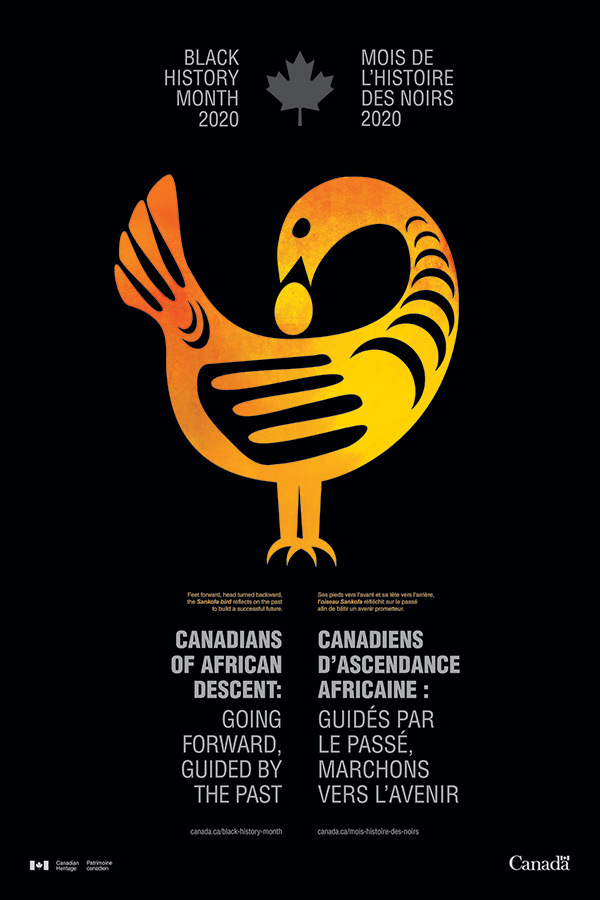
Every February, Canadians are invited to participate in Black History Month events that celebrate and honour the legacy and the many contributions of Black Canadians, past and present. In 2020, the theme of the Government of Canada’s Black History Month campaign was “Canadians of African Descent: Going forward, guided by the past”, inspired by the United Nations International Decade for People of African Descent. On February 24, the reception for Black History Month was held at the National Arts Centre. Over 1,000 guests attended, making this the largest Black History Month event held to date. In addition, the CSMARI Program supported 57 Black History Month community-led events for a total of $1.25M.
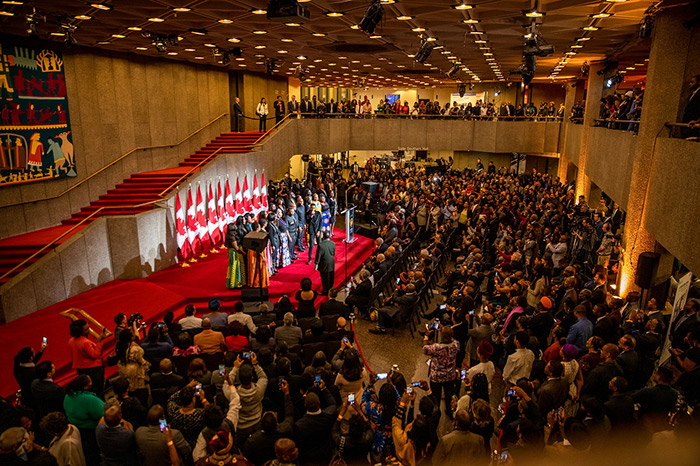
Asian Heritage Month
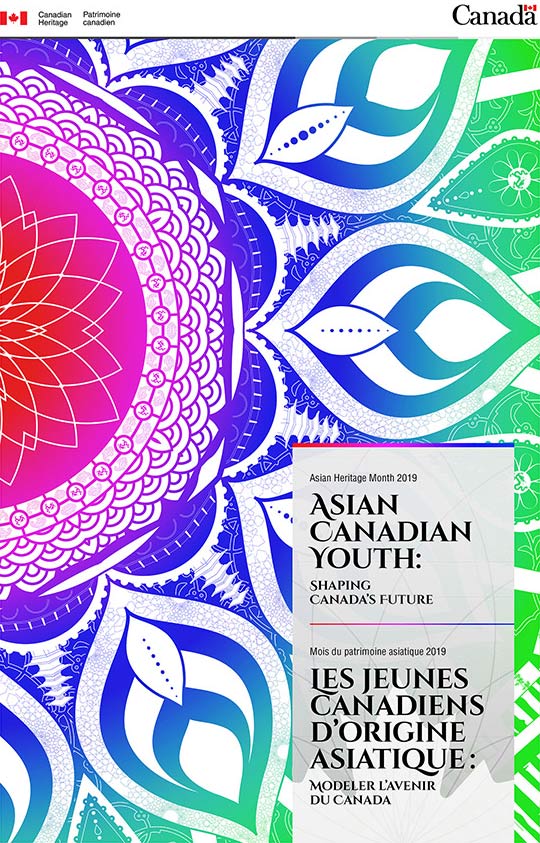
Asian Heritage Month honours the many achievements and contributions of Canadians of Asian descent who, throughout history, have done so much to make Canada the culturally rich nation that it is today. The theme for the 2019 Asian Heritage Month campaign was “Asian Canadian Youth: Shaping Canada’s Future.” On May 7, the reception for Asian Heritage Month was held at the National Gallery of Canada, with approximately 400 guests in attendance. Nine community-led Asian Heritage Month events were also supported through the CSMARI Program for a total of $226,000.
Commemorative Dates Adopted in 2019-2020
In keeping with the rich cultural heritage of our country and the spirit of our Multiculturalism Policy, which acknowledges the freedom of all members of Canadian society to preserve, enhance and share their cultural heritage, the Parliament of Canada passed three new parliamentary initiatives in 2019 proclaiming the invaluable contributions of many communities to Canada’s social, economic, and political fabric:
- April was recognized as Sikh Heritage Month
- The second week of September was recognized as Mennonite Heritage Week
- Finally, May 5 was declared Dutch Heritage Day.
These commemorative dates present an excellent opportunity for Canadians to learn more about the richness of the cultures and the historical contributions of these communities.
International Engagement
While the federal government has demonstrated its commitment to equality and inclusion with a focus on anti-racism initiatives through continued investments, the Multiculturalism Program has also continued to play a role on the international stage. Much of Canada’s positive reputation abroad was achieved through our efforts to support values of diversity, inclusion, and respect, and to encourage a society where all citizens can equitably access and participate in its economic, cultural, social, and political spheres.
On December 23, 2013, the UN General Assembly proclaimed 2015-2024 as the International Decade for People of African Descent (resolution 68/237). This resolution addressed the need to strengthen national, regional, and international cooperation in relation to the full enjoyment of economic, social, cultural, civil, and political rights by people of African descent.
Under the theme of “People of African Descent: Recognition, Justice and Development”, the main objectives of the Decade are to:
- Promote respect, protection, and fulfilment of all human rights and fundamental freedoms by people of African Descent, as recognized in the Universal Declaration of Human Rights;
- Promote a greater knowledge of and respect for the diverse heritage, culture, and contribution of people of African descent to the development of societies; and,
- Adopt and strengthen national, regional, and international legal frameworks according to the Durban Declaration and Programme of Action and the International Convention on the Elimination of All Forms of Racial Discrimination and to ensure their full and effective implementation.
On January 30, 2018, the Government of Canada officially recognized the Decade as an opportunity to highlight and celebrate the important contributions that people of African descent have made to Canadian society. It also acknowledged the existence of anti-Black racism and the accompanying need to understand and eliminate the barriers that keep Black Canadians from fully and equally participating in their society.
On March 13, 2020, Greg Fergus, Member of Parliament for Hull-Aylmer, participated via teleconference in the panel debate in Geneva, Switzerland, on the midterm review of the International Decade for People of African Descent. His attendance emphasized Canada’s commitment to the goals of the UN resolution both in an international context and as a reflection of what could be accomplished in Canada.
In recognition of the UN International Decade for People of African Descent, Budget 2019 invested $25 million over five years (starting in 2019-20) for Employment and Social Development Canada to administer projects and capital assistance to celebrate, share knowledge, and build capacity in Black Canadian communities.
The official recognition of the UN International Decade (and the subsequent funding of Canadian initiatives for Black Canadian communities) underscores the interdependence, intersectionality, and communal aspects of a worldview in which all members of society, here and abroad, are valued and recognized for their contributions.
International Convention on the Elimination of Racial Discrimination
Canada has ratified seven major UN human rights treaties, including the International Convention on the Elimination of All Forms of Racial Discrimination. This human rights instrument commits its members to the elimination of racial discrimination and the promotion of understanding among all races. The Convention was adopted by the UN on December 21, 1965. Canada ratified the Convention on Oct 14, 1970.
Article 1 of the Convention defines “racial discrimination” to mean “any distinction, exclusion, restriction or preference based on race, colour, descent, or national or ethnic origin, which has the purpose or effect of nullifying or impairing the recognition, enjoyment or exercise, on an equal footing, of human rights and fundamental freedoms in the political, economic, social, cultural or any other field of public life.” This declaration is congruent with existing Canadian legislation, including the Canadian Multiculturalism Act and the Canadian Charter of Rights and Freedoms.
International Holocaust Remembrance Alliance
The International Holocaust Remembrance Alliance (IHRA) is made up of government officials and experts from 34 countries, and promotes Holocaust education, remembrance, and research both nationally and internationally. Canada first became involved with the Alliance in 2007, became a full member in 2009, and chaired the Alliance until March 2014.
Canada submitted its first Country Report to the IHRA in January 2018. Covering the years 2011-2017, the Report contains information on general activities, including activities on Holocaust education, remembrance, research, and Holocaust denial and its relation to antisemitism.
Commemorative dates related to IHRA include Raoul Wallenberg Day on January 17, and International Holocaust Remembrance Day on January 27.
On January 27, 2020, Minister Chagger released a public statement supporting all Holocaust survivors and their descendants, particularly those who had chosen Canada as their home. She also emphasized that the IHRA definition of antisemitism had been adopted in Canada’s Anti-Racism Strategy.
Minister Chagger recommitted to the principles of the Declaration of the Stockholm International Forum on the Holocaust, which includes three key objectives:
- Supporting Holocaust education, remembrance, and research in member countries and around the world;
- Promoting the development of civil society through an annual grant programme; and
- Working in partnership with other international organizations to support these principles and objectives
Along with other Ministers and representatives of the IHRA’s 34 Member Countries and one Liaison Country, she also supported the adoption of the 2020 IHRA Ministerial Declaration. This statement from the Luxembourg Chairmanship to mark the 75th anniversary of the liberation of German Nazi concentration camps reiterates the commitment to Holocaust education, remembrance, and research.
IHRA established the Committee on the Holocaust, Genocide and Crimes Against Humanity to develop and share best practices on how to sensitively reflect and discuss the Holocaust and other cases of genocides without diminishing their respective differences in an educational and research environment.
IHRA’s Recommendations for Teaching and Learning about the Holocaust were published in partnership with UNESCO. The recommendations will help teachers and educators, administrators, and policymakers develop knowledge about the Holocaust, create engaging teaching environments, promote critical and reflective thinking, and contribute to human rights and genocide prevention education.
Along with guidance for educators, the Committee produced a publication that provides an overview of programs provided by 120 organizations worldwide that deal with the Holocaust in comparison to mass atrocities, and an accompanying report entitled History Never Repeats itself, but Sometimes it Rhymes: comparing the Holocaust to different Atrocities.
The current Chair of IHRA’s Committee on the Holocaust, Genocide and Crimes against Humanity is a Canadian, Professor Clint Curle.
Key Initiatives at Canadian Heritage: Enhancing the Multiculturalism Mandate
There are several funding programs at Canadian Heritage that aid in preserving and enhancing multiculturalism in Canada. They work to promote and recognize Canadians’ ethnocultural diversity in their programs, policies, and services. The following list is a sample of key funding programs in 2019-20.
Canada Media Fund
The Canada Media Fund (CMF) fosters, promotes, develops and finances the production of Canadian content for audiovisual platforms. Organizations supported by the CMF include Canadian television production companies, digital media production companies, and industry associations. Indigenous communities, official language minority communities, and third-language communities benefit from specially tailored funding envelopes. In addition to production financing, the CMF commissions studies and provides funding to industry organizations that work to support under-represented groups within the sector. From the Fund’s total budget of $353,157,000 in 2019-20, a total of $28,050,000 (7.94%) was allocated to ethnic, racial, or racial communities/initiatives.
One funded project included TLN Media Group’s documentary on the lives of Filipino caregivers, Nanny Magpakailanman?, which follows the lives of three characters at different stages of Canada’s Live-in Caregiver Program. This documentary is significant because it raises awareness about the lives of women who have left their families to care for others’ children around the world, in order to provide for their own families back at home. In some cases, these caregivers become citizens and may eventually reunite with their families. This is a program that has existed for decades but may be unknown to many Canadians. The documentary launches in 2021.
Digital Citizen Contribution Program
The Digital Citizen Contribution Program (DCCP) supports democracy and social inclusion in Canada by promoting an information ecosystem that is trusted, diverse, safe, and free from disinformation and illegal content, including hate speech, and by building citizen resilience to online disinformation through third-party civic, news, and media literacy activities and programming. In addition, the DCCP supports a community of Canadian researchers that promote a healthy environment ecosystem, to help Canadians and the Government understand online disinformation and its impact on Canadian society, and in turn build an evidence base to identify potential action and future policy-making. In 2019-20, 28.95%, or 11 out of 38 funded projects directly and specifically addressed ethnic, racial or religious communities.
One of the funded projects, “Engaging New Canadians through Digital and Civic Literacy,” by NorQuest College, seeks to engage members of vulnerable populations, including newcomers, English language learners (ELL) and English as a Second Language (ESL) learners in urban and rural areas. It engages them through online modules designed to raise awareness about online disinformation and enhance citizen preparedness to actively and productively participate in Canadian society. As there is limited research on the impact of online fraud and misinformation on vulnerable populations, this project aims to fill in the knowledge gap by researching the needs, developing training tools and resources specifically designed for ELL at a Canadian Language Benchmark (CLB) level of 2 and above, and evaluating their effectiveness in developing the skills and critical thinking needed for the identification of misinformation online. These resources are being piloted in NorQuest College’s courses that serve these populations, and this project is being conducted with regional partners. The project received $335,727 in funding and is taking place from December 2019 to March 2021.
Canada Cultural Spaces Fund
The Canada Cultural Spaces Fund (CCSF) contributes to improving physical conditions for professional arts and heritage-related collaboration, creation, presentation, preservation and exhibition while also contributing to increased and improved access for Canadians to arts and culture. The program achieves these objectives by supporting the construction and/or renovation of arts and/or heritage facilities, the acquisition of specialized equipment, and the development of feasibility studies for the construction or renovation of arts and/or heritage facilities, and sound business practices to help arts and heritage organizations be better rooted and recognized in their communities. The CCSF provides support through three components:
- Strategic Initiatives;
- Endowment Incentives; and
- Limited Support to Endangered Arts Organizations.
The Strategic Initiatives component of the CCSF provides financial assistance for projects involving multiple partners that help arts and heritage organizations improve their business practices and diversify their revenues. 5% of the CCSF’s budget was allocated towards ethnic, racial, and religious communities.
One funded project was “Be Belong Become - The Realization Project,” by the NIA Centre for the Arts Incorporated. The Nia Centre for the Arts located in Toronto, Ontario, is transforming 524 Oakwood Avenue into a professional multidisciplinary arts centre to present dance, theatre, music, film and visual arts from African-Canadian artists and creators. The 14,000 square foot space will include a performance venue, a digital art studio, artist studios, a recording studio, gallery space, an event/rehearsal space, co-working space, office space for arts organizations, a boardroom and administrative offices. The renovations will allow the Nia Centre to realize its mission to create a centre for black arts and culture in Canada and increase access to arts activities in its community. The project was funded for $1,931,000 in 2019-20.
Canada Periodical Fund
The Canada Periodical Fund (CPF) supports the activities of Canadian magazines and non-daily newspapers, which include publishers and organizations from both official languages, ethnocultural, Indigenous and LGBTQ communities to ensure that Canadians have access to diverse Canadian magazines and non-daily newspapers. The CPF is delivered through the following components:
- Aid to Publishers, which provides formula funding to Canadian print magazines and non-daily newspapers for publishing activities, such as distribution, content creation, online activities and business development;
- Business Innovation, which provides funding to print magazines and digital periodicals for business development and innovation projects; and
- Collective Initiatives, which provides funding to Canadian magazines and non-daily newspaper organizations for industry-wide projects to increase the overall sustainability of the Canadian magazine and non-daily newspaper industries.
In 2019-20, the CPF provided funding for 83 ethnocultural, 17 Indigenous, and 33 religious titles, accounting for 16.29% of funding. These were published in a total of 40 languages other than English and French.
One funded project was “The Greek Press,” by Greek Press Incorporated, a Greek-Canadian newspaper published weekly in Toronto, Ontario. The Greek Press editorial team is committed to its Founder’s mandate to present the life and achievements of a vibrant and strong Greek Canadian community in the Great Toronto Area, while keeping up to date with news and editorials that concern the current bi-cultural, bilingual and critical reader of today’s connected world. The Greek Press received $62,190 in operational funding for 2019-20.
Museums Assistance Program
The Museums Assistance Program (MAP) supports heritage institutions and workers to preserve and present heritage collections. MAP provides financial assistance to Canadian museums and related institutions for activities that facilitate Canadians' access to their heritage, fosters the preservation of Canada's cultural heritage, including the preservation of collections representative of Indigenous cultural heritage, and supports the development of professional knowledge, skills and practices related to key museum functions. In support of the Youth Employment and Skills Strategy, MAP assists heritage institutions in providing summer employment and internship opportunities for youth through Young Canada Works-Heritage. MAP also provides grants through the Movable Cultural Property Program to assist designated institutions to acquire cultural property that is threatened with export or is available for sale in international markets. In 2019-20, 9.6% of funding was allocated to ethnic, racial or religious communities.
An example of a funded initiative is the “Sacred Journey Travelling Exhibit” by the Heiltsuk Tribal Council, which received $40,000 in funding for 2019-20. The exhibit tells the story of the sea-going canoe, known to the Heiltsuk people as the glwa. After hosting the 2014 Qatuwas gathering, the Heiltsuk Tribal Council produced a feature-length documentary on modern canoe gatherings. This exhibit is an extension of that work to bring this story to other communities. The project respected Heiltsuk protocols and gives the Heiltsuk perspective on canoe culture, its history, resurgence and meaning to Heiltsuk communities. The exhibit featured structural elements and audio-visual components to place the viewer in the stories of the glwa from its legendary beginnings to modern canoe culture. The exhibit was hosted in Bella Bella, travelled to other locations in the Pacific Northwest, and is now permanently on display in Bella Bella, the home of the Heiltsuk.
Part 2: Implementation of the Canadian Multiculturalism Act across Federal Institutions
Methodology and Approach to Analysis
Part 2 of the Annual Report follows the structure of Section 3.2 of the Canadian Multiculturalism Act, which describes the responsibilities of federal institutions regarding promoting policies, programs and practices that are sensitive and responsive to the multicultural reality of Canada. The Canadian Multiculturalism Act recognizes the crucial role that federal institutions play in preserving and enhancing multiculturalism in Canada. The Act instructs federal organizations to address equal opportunity in federal institutions, promote capacity building, enhance the understanding of and respect for diversity, collect research and data that support the development of relevant policies, programs, and practices, and make appropriate use of the language skills and cultural knowledge of individuals of all origins.
To gather information from federal institutions for this year’s Annual Report, Canadian Heritage distributed questionnaires to government institutions of all sizes and mandates. The questionnaires aimed to identify and assess the federal government’s efforts in raising their workforce and society’s awareness and acceptance of Canada’s cultural diversity and inclusivity. This Report seeks to offer a snapshot of the activities undertaken by federal institutions in support of the operation of the Act, along with ensuring accountability and space for shared promising practices.
Of the 160 departments that received the questionnaire, 105 submitted a response. Fewer responses were provided this year due to a limited capacity in many institutions to complete the questionnaire resulting from COVID-19. Each questionnaire had 28 questions, and an additional 5 for Canadian Heritage Portfolio Institutions. The input received was reviewed, tabulated and analyzed based on the following four themes from Section 3.2 of the Canadian Multiculturalism Act.
- Collection of Data: Efforts to collect and use data to design evidence-based policies, programs and practices that are sensitive and responsive to the multicultural reality of Canada.
- Education and Awareness: Efforts to educate and raise awareness on cultural and racial diversity and the challenges these groups face, and efforts to promote social inclusion and cohesion.
- Prevention and Solutions: Efforts to ensure the full and equitable access of individuals and communities of all origins.
- Promotion and Celebration: Efforts to promote and celebrate the historical contribution and heritage of communities of all origins to Canadian society.
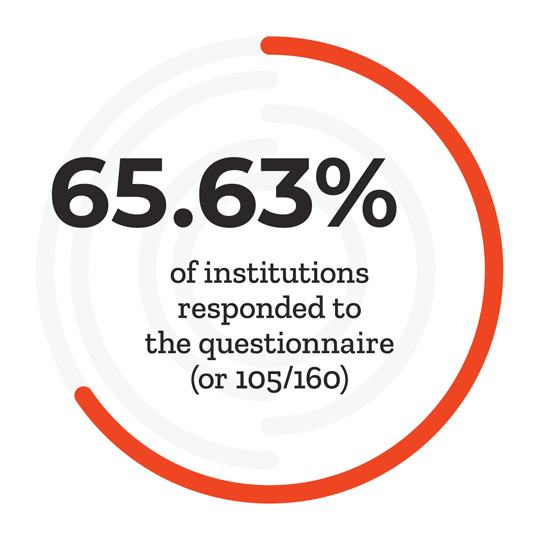
Figure 2 Response Rate of Federal Institutions to Questionnaire – text version
- 65.63% of institutions responded to the questionnaire (or 105/160)
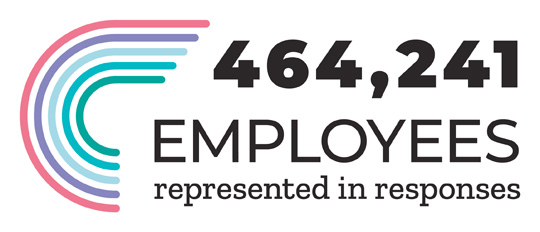
Figure 3 Number of Employees Represented in Responses (Including Members of the Canadian Armed Forces) – text version
- 464,241 employees represented in responses
Federal Institutions Highlights – Thematic Analysis
Promising Practices Highlights
Collection of Data
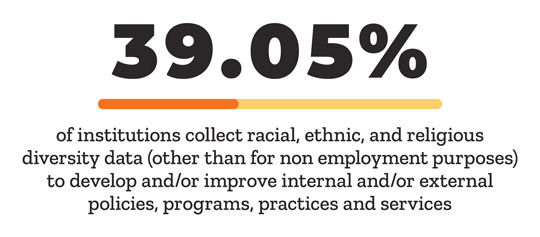
Figure 4 Percentage of Institutions that Collect Racial, Ethnic, or Religious Diversity Data to Develop or Improve Policies, Programs, Practices or Services – text version
- 39.05% of institutions collect racial, ethnic, and religious diversity (other than for non employment purposes) to develop and/or improve internal and/or external policies, programs, practices and services
| Name of federal institution | Initiative |
|---|---|
| Bank of Canada | Following senior management’s decision to launch a strategic diversity and inclusion initiative in the Bank’s new 2019-21 Medium Term Plan, the first Diversity and Inclusion Pulse Check was launched in the spring of 2019. The pulse check survey aims to gather insight about how employees view the Bank’s culture as it relates to diversity and inclusion and contributes to building diversity and inclusion metrics that can be compared from year to year. Diversity and Inclusion Champions (Executive Leaders), Diversity and Inclusion Committee, and Employee Resource Groups provided input to the survey questions and design to ensure that it properly meets its objectives. While employees from diverse groups generally gave the Bank high marks on inclusiveness in the work environment, results indicated that more can be done to ensure employees in equity-seeking groups feel more comfortable being themselves at work. |
| Canada Council for the Arts | The Council’s first research project grounded in Indigenous ways of knowing is underway in partnership with Archipel Research and Consulting Inc., an Indigenous-owned firm. The firm is conducting research and developing a framework that furthers understanding of the significance of the Council’s funding for Indigenous artists and the role that Indigenous arts and culture play in the lives of all Canadians. An Indigenous and decolonizing research methodology is being used to promote meaningful and respectful dialogue with Indigenous artists from various backgrounds and cultural identities. |
| Social Sciences and Humanities Research Council (SSHRC) | In 2019-20, SSHRC, in collaboration with the other federal granting agencies, undertook the review of socio-demographic data being collected in SSHRC’s programs in order to take into account new emerging standards and legal obligations. Notably, this review led to the adoption of new questions that will allow the agencies to collect more intersectional and disaggregated data on diverse population groups without compromising the privacy of respondents’ personal data. SSHRC has published aggregate data on application rates and award rates by underrepresented groups in a dashboard accessible on their website. |
| Statistics Canada | Using different data sources produced by Statistics Canada with information on Indigenous Peoples, immigrants, as well as ethnocultural, linguistics and religious groups, numerous reports, articles, fact sheets, infographics, visualization tools, reference products and data products were released on Statistics Canada’s website in 2019–2020. The analytical and data products produced by Statistics Canada provide evidence-based and in-depth insights on many topics, such as demography, language, education, economy, labour market, justice, and health information. They can help identify and monitor issues for various population groups. On a regular and ongoing basis, they are also used in the planning of various services for Canadians, in the development and evaluation of programs and policies, in academic studies and to inform the public. |
| Western Economic Diversification Canada (WD) | In 2019, WD commissioned a Global Entrepreneurship Monitor (GEM) Study on women and youth entrepreneurship in western Canada. The GEM survey includes a question on Indigenous identity, which will help provide WD with insights on Indigenous attitudes towards entrepreneurship and highlights areas for further research. The project will increase WD’s understanding of the entrepreneurship experience of women and youth, including the intersectional experience of Indigenous women and Indigenous youth. This information will enable better policy advice and help obtain stronger outcomes from WD-funded programs through evidence-based decision-making. It will also help WD advocate for the business and entrepreneurship supports in western Canada available to these groups and enhance GBA+ capacity within the department. |
Education and Awareness

Figure 5 Percentage of Institutions with Events that Educate Employees on Diversity in the Workplace – text version
- 86.67% of institutions have events that educate employees on diversity in the workplace
| Name of federal institution | Initiative |
|---|---|
| Atlantic Canada Opportunities Agency | During fiscal year 2019-20, the Agency developed a curriculum on Diversity, Inclusion and Competency, Excellence (DICE). Approved as a mandatory training by the Agency’s Executive Committee in January 2019, DICE was further developed and is a one-day learning experience specifically designed to raise awareness and promote action regarding issues of diversity and inclusion as well as removing barriers of systemic discrimination in the workplace. The course was piloted in February and will be delivered during fiscal year 2020-2021 to all employees. This will provide baseline learning for all employees and managers at the Agency. |
| Global Affairs Canada | Mission Cultural Fund (MCF) is a $1.75 million fund to support cultural diplomacy activities that: increase awareness of Canadian foreign policy priorities; increase Canada’s access to political, cultural and economic decision makers and influencers abroad; and foster international business and networking activities for Canadian artists and arts organizations. All missions can apply for the MCF. Priority is given to projects that advance Government of Canada themes, such as human rights, diversity, and inclusion. Funding for the MCF was approved for five years (2018-2023). |
| International Development Research Centre (IDRC) | The Gender and Inclusion Working Group seeks to facilitate coherence and communication between the numerous gender and inclusion actions at the International Development Research Centre. The working group implemented IDRC’s Equality Statement and partnered with the Canadian Centre for Diversity and Inclusion to assess IDRC’s current state of diversity and inclusion and to identify potential areas for improvement. The working group started the design of a gender programming framework to integrate gender more systematically and intentionally into IDRC’s programming. They also created a gender equality and inclusion hub on IDRC’s main intranet page where employees can ask questions, provide feedback, and review updates on initiatives, resources, and other information. |
| Parks Canada | Bringing the Indigenous language of the Shúhtaot'ine (Mountain Dene) back to the landscape of Nááts'įhch'oh National Park Reserve is a key goal for Parks Canada and its co-operative management partners in the Sahtu Region of the Northwest Territories. The Shúhtaot'ine language is filled with the music of the land and represents a vital cultural record for the local people. The Shúhtaot’ine language has its own sounds and pronunciations that are represented through a unique orthography that non-Indigenous speakers may find challenging. To encourage people to try to use the Indigenous names, local Elders worked with Parks Canada staff to create a special page on the Nááts'įhch'oh National Park Reserve website that guides visitors through the place names, provides phonetic pronunciations, and features audio recordings of local Elders giving guidance on how to say the words or phrases properly. |
| Public Safety Canada | Public Safety Canada reinvigorated its Equity, Diversity and Inclusion Committee under the title of “Inclusive by Design” with an updated mandate and work plan. The Committee is responsible for providing advice and support on the promotion of diversity and inclusion; and, fostering a respectful and equitable workplace in order to eliminate any procedural, physical and behavioural barriers for employees within the Department. In this reporting year, the Committee organized and hosted events including a fireside chat with the Deputy Minister on diversity and inclusion; a diversity and inclusion speaker series; an annual diversity and inclusion week; and the Canada School of Public Service unconscious bias training challenge. |
Prevention and Solutions
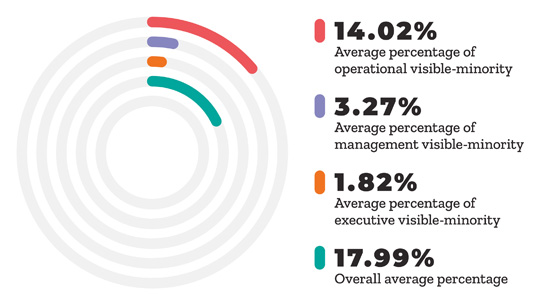
Figure 6 Average Percentage of Operational, Management, and Executive Visible Minorities, Overall Average – text version
- 14.02% - Average percentage of operational visible-minority
- 3.27% - Average percentage of management visible-minority
- 1.82% - Average percentage of executive visible-minority
- 17.99% - Overall average percentage
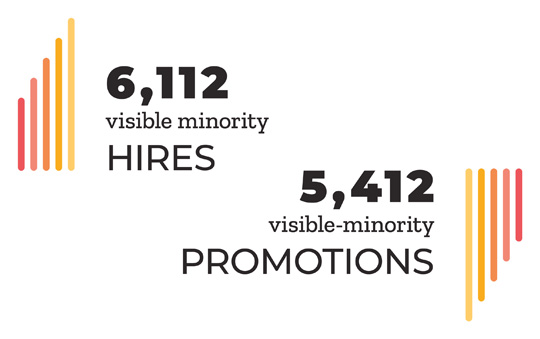
Figure 7 Total Number of Visible Minority Hires, Total Number of Visible Minority Promotions – text version
- 6,112 visible minority hires
- 5,412 visible minority promotions
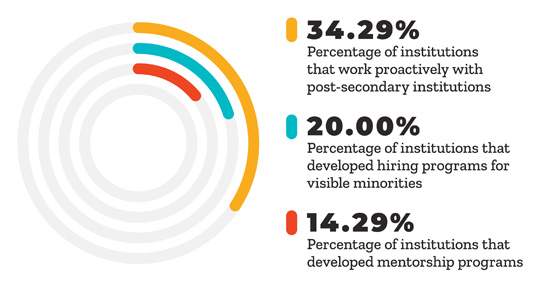
Figure 8 Percentage of Institutions that Work Proactively with Post-Secondary Institutions, Developed Hiring Programs for Visible Minorities, Developed Mentorship Programs – text version
- 34.29% - Percentage of institutions that work proactively with post-secondary institutions
- 20.00% - Percentage of institutions that developed hiring programs for visible minorities
- 14.29% - Percentage of institutions that developed mentorship programs
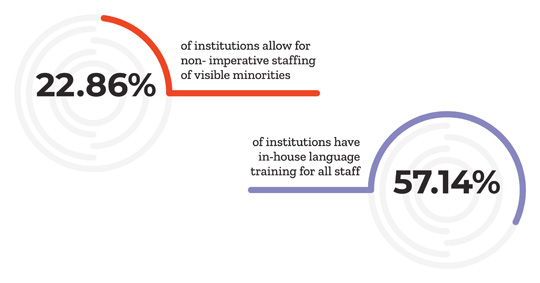
Figure 9 Percentage of Institutions that Allow for Bilingual Non-Imperative Staffing of Visible Minorities, Have In-House Language Training for All Staff – text version
- 22.86% of institutions allow for non-imperative staffing of visible minorities
- 57.14% of institutions have in-house language training for staff
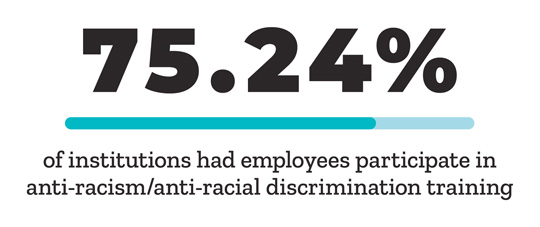
Figure 10 Percentage of Institutions whose Employees Participated in Anti-Racism/Anti-Racial Discrimination Training – text version
- 75.24% of institutions had employees participate in anti-racism/anti-racial discrimination training
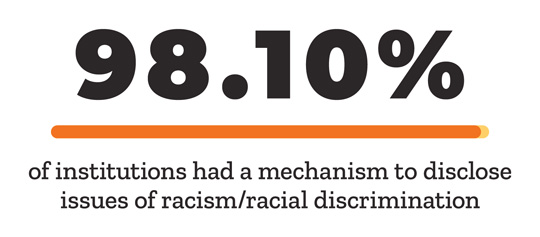
Figure 11 Percentage of Institutions that Have a Mechanism to Disclose Issues of Racism/Racial Discrimination – text version
- 98.10% of institutions had a mechanism to disclose issues of racism/racial discrimination
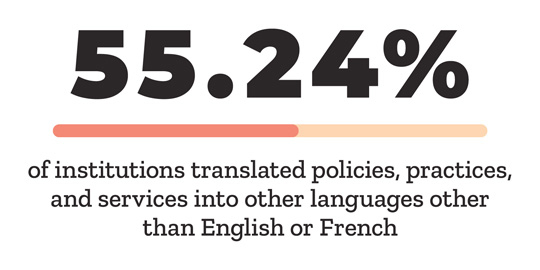
Figure 12 Percentage of Institutions that Translated Policies, Practices, or Services into Languages Other than English or French – text version
- 55.24% of institutions translated policies, practices, and services into other languages other than English and French
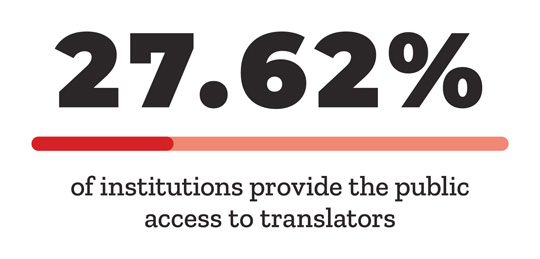
Figure 13 Percentage of Institutions that Provide the Public Access to Translators – text version
- 27.62% of institutions provide the public access to translators
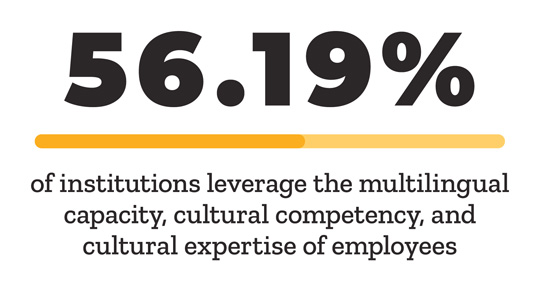
Figure 14 Percentage of Institutions that Leverage the Multilingual Capacity, Cultural Competency, or Cultural Expertise of Employees – text version
- 56.19% of institutions leverage the multilingual capacity, cultural competency, and cultural expertise of employees
| Name of federal institution | Initiative |
|---|---|
| Agriculture and Agri-Food Canada (AAFC) | The Indigenous Student Recruitment Initiative (ISRI) gives Indigenous students experience and knowledge of the careers available at AAFC and within the public service as a whole and encourages them to pursue an education and career in science, technology, engineering, and mathematics (STEM). Through the ISRI, AAFC has met with over 4,000 Indigenous students at local job fairs and school events, and with over 75 First Nations Chiefs at individual meetings and various events and gatherings. The ISRI has seen a continuous increase in the total number of Indigenous students hired through summer contracts at AAFC. In its first year, 21 Indigenous students were hired through the ISRI into various positions throughout the Department. This number grew to 55 students hired in summer 2017, 65 in summer 2018, and 67 students hired in the summer of 2019. |
| Canada Mortgage and Housing Corporation (CMHC) | CMHC has diverse language training offerings that tailor to employees’ needs and challenges. It offers in-class and online part-time training, web-based self-directed learning solution, as well as a full-time training option. The Language Team elaborates on this through personalized training plans developed in accordance with organizational requirements and learner’s needs, challenges, and strengths. These plans consider the learner’s background and offers a comprehensive and holistic approach to achieving learning objectives. |
| Federal Economic Development Agency for Southern Ontario (FedDev Ontario) | FedDev Ontario’s Small Business Services team uses their language capacity to provide outreach to newcomer communities in Ontario. For example, in fiscal year 2019-20, the team delivered presentations to newcomer audiences in Mandarin on FedDev Ontario programming and Small Business Services resources. Leveraging staffs’ multilingual capacity aids Small Business Services in maintaining partnerships and stakeholder relations with a number of cultural associations. It reduces language barriers for small and medium-sized enterprises that are not fluent in one of the official languages. Meeting the language needs of newcomer entrepreneurs in Canada helps support the government’s inclusive growth agenda. |
| Health Canada | Health Canada developed a new and refreshed Canada’s Food Guide snapshot and its translations to help Canadians make healthy eating choices. The products were translated into Arabic, Traditional and Simplified Chinese, Farsi, German, Hindi, Italian, Korean, Polish, Portuguese, Punjabi, Russian, Spanish, Tagalog, Tamil, Urdu, Vietnamese, Dene, Michif, Ojibwe, Oji-Cree, Plains Cree, Inuinnaqtun, Inuktitut (Baffin), Inuktitut (Nunavik), and Inuktitut (Nunatsiavut). This resulted in the information reaching specific communities with important health information in the language of their choice. |
| Public Prosecution Service of Canada (PPSC) | PPSC’s Nunavut Regional Office (NRO) has implemented Inuit only selection panels for their staffing processes where possible. Where an Inuit only selection panel is not possible, Inuit representation is strongly encouraged. In addition to Inuit representation on selection panels, innovative staffing practices initiated by the PPSC include the review of assessment methods by experienced Inuit members of the office to ensure that they are more inclusive to all candidates. This has resulted in the elimination of written exams and the flexibility to ask additional questions at the interview beyond planned ones to assist the selection panel in obtaining the information necessary to determine whether an applicant is qualified for a position. Furthermore, Inuit-only staffing panels have enabled applicants to speak in either Inuktitut or English during their interviews. Inuit candidates have shared positive feedback in respect to Inuit only selection panels and have remarked that this is the only time they have encountered Inuit staffing panels within the federal government. In addition, Inuit members of the NRO have also been asked to participate in the assessment and selection panels of other departments. This initiative has contributed to increasing Inuit representation within the office. |
Promotion and Celebration
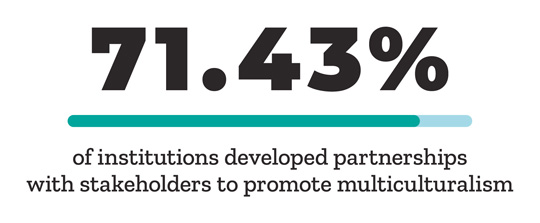
Figure 15 Percentage of Institutions that Developed Partnerships with Stakeholders to Promote Multiculturalism – text version
- 71.43% of institutions developed partnerships with stakeholders to promote multiculturalism
| Name of federal institution | Initiative |
|---|---|
| Canadian Northern Economic Development Agency (CanNor) | CanNor’s Carving Art Display Program in partnership with Qikiqtaaluk Corporation provides CanNor with an opportunity to receive and showcase Inuit Art from all over Nunavut to display the many talents that Inuit possess. It provides a sense of pride and belonging to Inuit employees to see creative pieces in the workplace and provides an increased sense of awareness to non-Inuit of cultural abilities across Nunavut. |
| Ingenium – Canada’s Museums of Science and Innovation | One Sky, Many Worlds is a collaborative exhibition led by Indigenous Knowledge Keepers from around the world. The exhibition explores the enduring relationship and connection that Indigenous people have with the night sky and how it has provided – and continues to provide – a practical, cultural, and spiritual guidebook for life. The exhibition and partnership fit into a timely and important larger discussion about Indigenous knowledge and how it is helping to cultivate a more open and inclusive understanding of science. The exhibition is scheduled to open to the public in May 2022. |
| National Film Board of Canada (NFB) | The NFB supports the ImagineNATIVE Film and Media Arts Festival's research initiative to establish protocols on media production practices for the Canadian industry. The NFB’s financial support allowed for the launch of On-Screen Protocols & Pathways: A Media Production Guide, which is intended to show the production community how to work with Indigenous communities in a positive and mutually beneficial way. |
| Natural Sciences and Engineering Research Council of Canada (NSERC) | NSERC’s recently redesigned Alliance program, which enables collaborations between academic researchers and non-academic partners in private sector as well as non-profits and other potential knowledge users, created new possibilities for research collaborations with Indigenous stakeholders. NSERC established a contract with Indigenous Works to help scope out engagement plans in sectors where NSERC could actively build research collaborations in areas relevant to Indigenous communities. Work carried out under this contract is also playing a key role in NSERC’s implementation of a tri-agency Indigenous research strategy. |
| Royal Canadian Mounted Police (RCMP) | The RCMP’s “F” Division continues to build relationships with the Saskatchewan Islamic Community, including the Islamic Association of Saskatchewan. The RCMP engages with the community through various interfaith dinners, as well as Ramadan fast breaking dinners with the Intercultural Dialogue Institute of Regina. This engagement work serves to educate RCMP employees on the Islamic community in Saskatchewan, the Muslim faith, religious celebrations, and the challenges faced by this community, allowing the RCMP to be more informed and better serve Muslim communities. |
Conclusion
This report presents a sampling of the actions federal institutions took to demonstrate their commitment to the pursuit of policies and programs that reflect the essence of multiculturalism, diversity, and inclusion. Part 1 of the report focused on the actions of the core Multiculturalism Program, mainly in its policy advice function, community investments, public outreach and education, support to federal institutions, and international commitments. The Program also expanded its mandate through Canada’s Anti-Racism Strategy, including the creation of the Anti-Racism Secretariat, and partnerships with various partners to counter online hate and improve data collection and analyses, especially regarding the outcomes of racialized communities, Indigenous peoples, and religious minorities. Part 1 also highlighted key initiatives within Canadian Heritage that help to enhance the multiculturalism mandate through the support of diverse communities through initiatives including the Canada Media Fund, Digital Citizen Contribution program, Canada Cultural Spaces Fund, Canada Periodical Fund, and the Museum Assistance Program.
Part 2 of the report provides an overview of how federal institutions promoted policies, programs and practices that are sensitive and responsive to the multicultural reality of Canada. Illustrative examples within the themes of Collection of Data, Education and Awareness, Prevention and Solutions, and Promotion and Celebration only represent a small part of the collection of initiatives undertaken by federal institutions. The results indicate that institutions are taking action and innovating in the ways that they contribute to a more inclusive Canada. However, the results also indicate the need for continued improvement, especially in making institutions themselves more inclusive as well as putting the collection and use of data at the center of policy and program development. Ultimately, federal institutions that embrace multiculturalism, diversity, and inclusion will become stronger, and help make Canada a consciously more inclusive nation.
© Her Majesty the Queen in Right of Canada (2021)
Catalogue No. CH31-1E-PDF
ISSN 1497-7400
Page details
- Date modified: